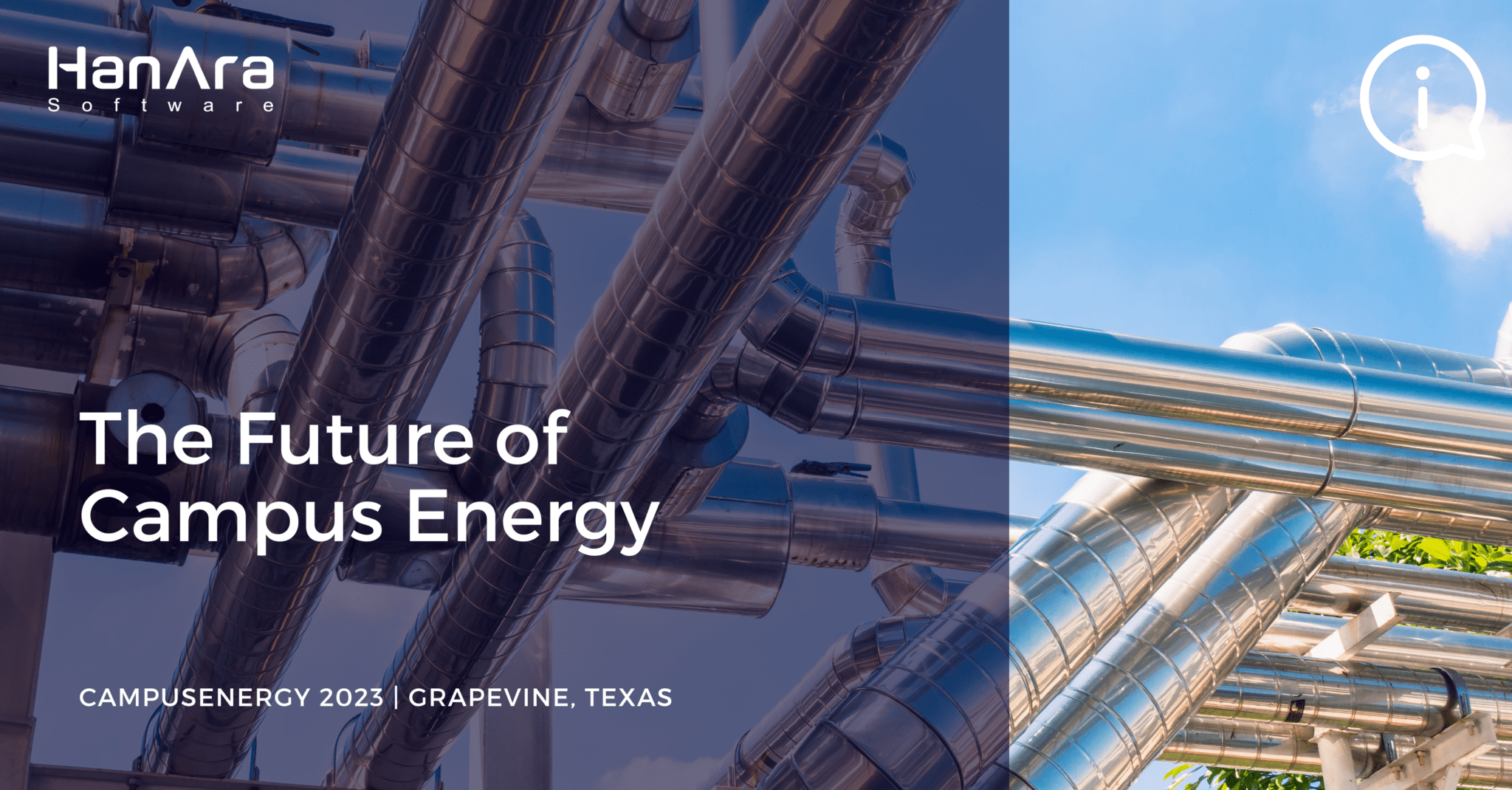This past week in Grapevine, Texas, members of the HanAra team participated in the International District Energy Association (IDEA) CampusEnergy2023 conference. This year the conference was packed full of informative sessions on advancements made by district energy organizations in the past couple of years. The conference presenters also looked to the future with discussions on future-proofing the industry.
With an eye on future-proofing, the theme of this year’s conference was De-Carbonizing the Campus: Planning, Tools, & Technologies. With this topic in mind, campuses and district organizations presented ideas and concepts on how the industry will provide sustainable and reliable services to campuses across the globe. Based on the discussions and presentations at the conference, the campus energy space is making great strides in being good energy stewards. And the industry is also pushing itself toward significant improvements and advancement required for district energy decarbonization.
When considering the changes the campuses will make in the short and long term related to decarbonization, organizations should ensure that they 1) identify the issue, 2) plan for investment, and 3) build organizational purpose.
Identify the Issue
Campuses must always keep their main decarbonization goal at the top of the to-do list if they plan on meeting current goals set by administrations. Unfortunately, as humans, we tend to play whack-a-mole with issues and our to-do lists. When a problem or issue pops up, we immediately fix that issue. Fixing immediate problems can be an effective way to complete tasks, but it can be ineffective at managing future issues and can make it difficult to achieve meaningful goals like carbon neutrality by 2050.
Organizations must identify whether an issue is merely a symptom or the cause to better future-proof the industry. By addressing the cause, an organization can prevent future problems, which has a more significant overall impact on sustainable and reliable operations. One way to help identify the cause of the issue is to analyze historical and real-time data. When you can measure where you’ve been and where you currently are, you can better see what is or is not working. Without these measurements, you end up relying on feelings only. Of course, emotions are important, but we need measurable change to determine whether we succeed in our district energy decarbonization goals.
Plan for Investment
Future-proofing (and achieving decarbonization goals) will require upfront and ongoing investments. There are some quick and cost-effective wins, like upgrading lighting to more energy-efficient technology. But to reach campus decarbonization goals, investments that address the leading cause of the issue must be made. By focusing the conversation on the costs and benefits, the industry will better understand what is or is not possible.
Understanding that the benefits will be both direct and indirect, as well as short-term and long-term, district energy organizations and campuses should continue to share best practices and findings. The sharing community was on showcase at the conference as discussions flowed freely. Beyond this openness, what was readily apparent was that current and future investments are not a one-size fits all approach. The type, amount, and period of investments depend on everything from the university’s geographic location to its current district energy setup to its campus funding. As a result, each university and campus will have to create its plan and framework to achieve carbon zero.
Build Organizational Purpose
Finally, the people are at the core of future-proofing and achieving district energy decarbonization. District energy experts have diligently provided the necessary utilities to keep campuses, cities, healthcare centers, and more up and running. In the future, people as agents of district energy reliability and resiliency will not change. However, this does not mean that the members of the district energy community do not need to advance and grow.
As new technologies, solutions, and systems come to the market, district energy members must learn, grow, and change with the technology. To help facilitate this change, district energy leaders must continue to focus on organizational purpose. By focusing on the goal (or the why), people are better at adapting, being flexible, and improving than focusing solely on the how or the what.
Learn More
Missed us at CampusEnergy2023 and are interested in learning how we help campuses improve operations? Reach out to us today. We help provide users with the necessary data insights to improve operations and take a step toward achieving their district energy decarbonization goals.
